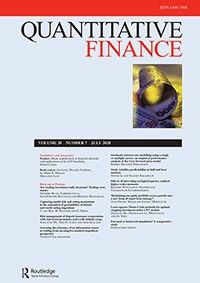
Maximizing an equity portfolio excess growth rate
A new form of smart beta strategy?
Written on 11 Sep 2020.

We are pleased to enclose an EDHEC-Risk Institute research article published in the Volume 20, Issue 7 of Quantitative Finance.
In this article "Maximizing an equity portfolio excess growth rate: a new form of smart beta strategy?", authors Jean-Michel Maeso and Lionel Martellini provide a thorough empirical analysis of the maximization of an equity portfolio excess growth rate in a portfolio construction context for individual stocks
TOPICS: Portfolio construction, Diversification, Excess growth rate, Stochastic portfolio theory
KEY FINDINGS
It has been claimed that, for dynamic investment strategies, the simple act of rebalancing a portfolio can be a source of additional performance, sometimes referred to as the volatility pumping effect or the diversification bonus because volatility and diversification turn out to be key drivers of the portfolio performance. Stochastic portfolio theory suggests that the portfolio excess growth rate, defined as the difference between the portfolio expected growth rate and the weighted-average expected growth rate of the assets in the portfolio, is an important component of this additional performance (see Fernholz [Stochastic Portfolio Theory, 2002 (Springer)]). In this context, one might wonder whether maximizing a portfolio excess growth rate would lead to an improvement in the portfolio performance or risk-adjusted performance.
In out-of-sample empirical tests conducted on individual stocks from 4 different regions (US, UK, Eurozone and Japan), authors find that portfolios that maximize the excess growth rate are characterized by a strong negative exposure to the low volatility factor and a higher than 1 exposure to the market factor, implying that such portfolios are attractive alternatives to competing smart portfolios in markets where the low volatility anomaly does not hold (e.g. in the UK, or in rising interest rate scenarios) or in bull market environments.
This project was sponsored by BdF Gestion in the context of the “Maximizing and Harvesting the Rebalancing Premium in Equity Markets” research chair at EDHEC-Risk Institute.
Lionel Martellini is a professor of finance at EDHEC Business School and the director of EDHEC-Risk Institute. He is a former member of the faculty at the Marshall School of Business, University of Southern California, and he has also taught at UC Berkeley and Princeton University. He is a member of the editorial boards of The Journal of Portfolio Management, The Journal of Alternative Investments, and The Journal of Retirement. He conducts active research on a broad range of topics related to investment solutions for individual and institutional investors, equity and fixed-income portfolio construction, risk management, and derivatives valuation. He holds several Master’s degrees as well as a PhD in finance from the Haas School of Business, University of California at Berkeley.
Jean-Michel Maeso is a senior quantitative researcher at EDHEC-Risk Institute since October 2015. Previously, he spent 5 years in the financial industry specialising in research, development and implementation of investment solutions (structured products and systematic strategies) for institutional investors. He holds an engineering degree from the Ecole Centrale de Lyon with a specialisation in applied mathematics.

